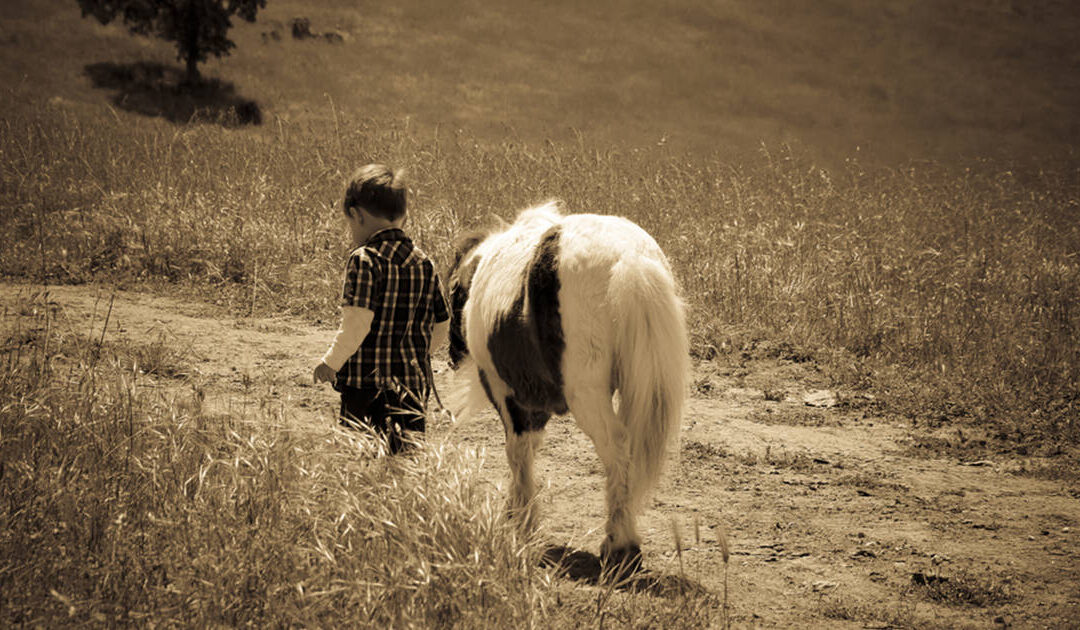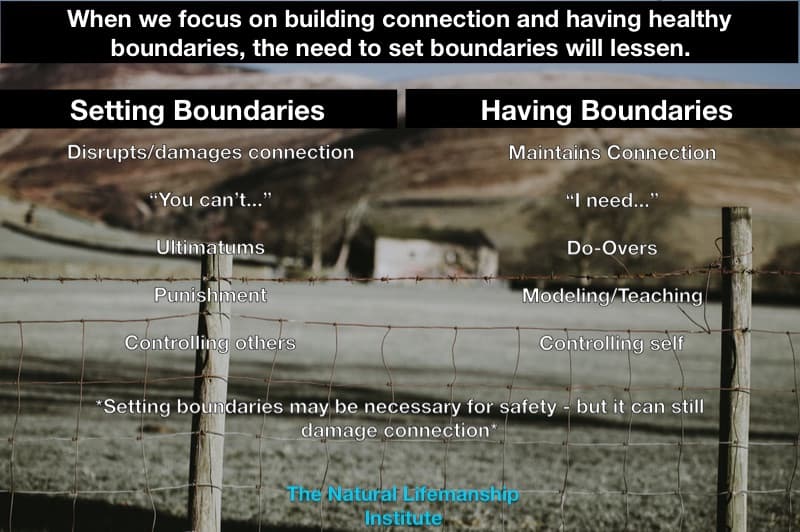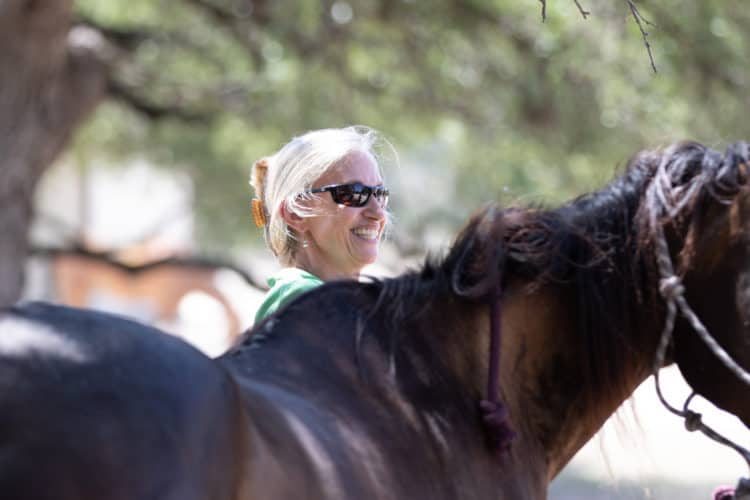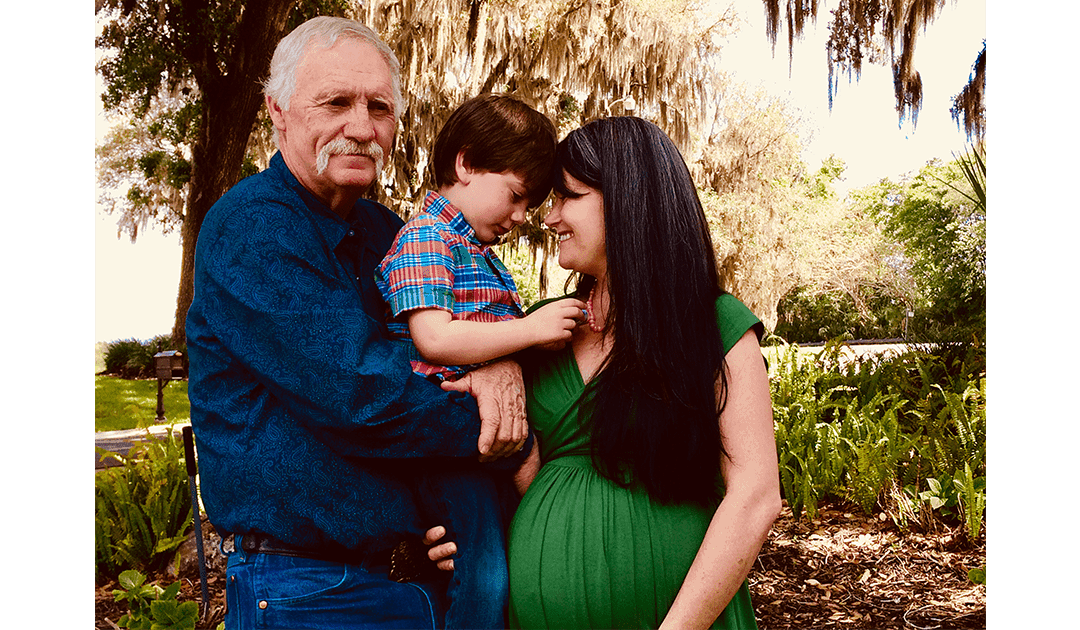
by Bettina Shultz-Jobe, LPC, NBCC | Nov 25, 2019 | Applied Principles, Personal Growth
When I was 23 years old and life was truly grand, on a beautiful fall day in Denver, Colorado, my Great Aunt Martha Dell asked me how I was doing. I said with pure joy and youthful exuberance, “I am great! Really! Life is just wonderful right now.” She grinned, gave me a slight hug, and said. . . “This too shall pass.”
This too shall pass? What! I was quite familiar with Christianese, so I had heard this pat statement before when a person was struggling, but never before had I heard a person say this to someone who was doing well. HOW NEGATIVE! Geez Aunt Martha Dell, way to rain on my parade!
Years later I have thought of my Aunt’s words often, and with each passing year, and each loss, I sink deeper into the wisdom of her words.
This morning, Dolly Parton’s song, “Hard Candy Christmas,” played in our home. (It’s a lovely song by the way!) As my children and husband danced, I felt a wave of emotion; and tears filled my eyes as I pictured my parents, many years ago, two-stepping in the kitchen to this song. Visceral joy filled our home in these moments. This morning I cried as I remembered. Actually, I sobbed. At the time, I had no idea how fleeting these moments would be. Things have changed and are changing with and between my parents.
Things are changing. All the time. This isn’t profound I know, but it’s true. All moments or seasons, the good and the bad, will indeed pass.
In my darkest, hardest moments I have never found comfort in the words, “this too shall pass,” but I find a profound capacity for mindfulness and gratitude in the simplest of moments when I hear my Aunt’s voice in my heart. “Bettina, this too shall pass. Breathe it in. Pause. Sense into THIS moment, right now. Connect.”
Connect to this moment so that later, when life if hard (and it will be) you can summon this memory, and find peace, joy, and comfort.
So. . . this morning as I wept, I was reminded that this too – this moment with my family – shall pass. . . so I danced. I sang. I looked deeply into the eyes of my husband and our two adorable children, and I breathed it in. I felt warmth in my chest, tingling in my nose and fingers, and deeply anchored at my navel. I felt a deep sense of gratitude surge through my entire body – it was pink and soft. Research suggests that these moments change us. These moments rewire the brain, make us healthier, happier, and more connected – if these moments change us, they go with us.
I often invite my clients to deeply breathe in the simple, yet poignant moments that are inevitable when we’re in nature and in the company of horses.
Pause.
Notice.
Slow down.
Breathe.
In this moment, feel your connection to this horse and to this space.
What do you notice in your body? Where do you feel that in your body? What is the shape? Color? Texture? Sound? What do you taste? Smell? Hear? Feel? When you notice that, what do you notice next? And then next? And then next? Notice it all – around you and inside you.
Breathe it in.
Sense into and embody this moment. Let this moment become part of who you are, because this moment will pass, but your experience of it doesn’t have to. Breathe it in and take it with you. Your body can remember. THIS is what gratitude is all about. THIS is mindfulness at it’s best. THIS is what I pray you and your clients find this holiday season.

I use variations of this skill on a daily basis to help me connect to my body, the moment, and to others. This card is part of theNL Skill Cards and is available as an instant download (or the physical cards can be mailed to your home). The NL Skill Cards are also part of the Essential Connection Kit. I hope you find these cards helpful both personally and professionally!
Read here to learn about the research Dr. Robert Emmons has done on gratitude: https://greatergood.berkeley.edu/article/item/why_gratitude_is_good
The Grateful Heart: The Psychophysiology of Appreciation https://www.heartmath.org/research/research-library/basic/grateful-heart-the-psychophysiology-of-appreciation/

by Bettina Shultz-Jobe, LPC, NBCC | Aug 5, 2019 | Basics of Natural Lifemanship, Case Studies, Parenting and Counseling Children, Personal Growth
In this field, it is not uncommon to hear people answer the question “Why Horses?” with some variation of how horses help us learn how to set healthy boundaries. Is this true? Well, it depends. . .
In Natural Lifemanship we believe that horses help us learn how to build healthy, connected relationships. We teach that in order to build healthy connections we must have healthy boundaries. We also teach that the need to set boundaries is a connection issue – a connection issue that can only be addressed by seeking to build stronger connection.
Setting boundaries is certainly necessary at times to establish safety, but it is important to understand that while the setting of a boundary may establish safety it could also damage the connection. In a relationship that matters (one in which I plan to stay), it is our intent to build connection. Healthy boundaries are set by me for me, not for someone else by me. We also teach that in a healthy relationship it is important to focus on what I do want (connection), instead of focusing on what I don’t want. Typically, when a person is setting a boundary they are focused on what they don’t want, which often results in an attempt to control the other. AND when control enters the relationship, connection leaves – control of the other and connection simply cannot co-exist.
When doing TF-EAP or TI-EAL, it is important that when the subject of boundaries arises, we teach our clients how to build connection by having boundaries, rather than inadvertently teaching them to control others by setting boundaries.

Having boundaries simply put is:
- I am me and you are you.
- My body is my body, and I have a right to choose what happens with it
- My feelings are my feelings, and I have a right to my own feelings.
- My thoughts are my thoughts, and I have a right to my own thoughts
- It is not my job to fix others
- It is okay for others to feel any emotion – anger, sadness, rage, loneliness etc.
- I don’t have to read the minds of others or anticipate their needs
- It is okay to say no
- I need only take responsibility for myself
- Nobody has to agree with me
- This is a way of being in the world and in relationships
Timothy was a 9-year-old male participating in Trauma Focused Equine Assisted Psychotherapy (TF-EAP). He had a history of abuse and neglect. He struggled socially and was often bullied in school. He was in the foster care system. In 5 years he had lived in 12 different homes and gone to 10 different schools. When he started our program he chose to work with a mini horse named Ladybug who had some of the same struggles as Timothy. In fact, when asked why he chose Ladybug, Timothy said, “Because she is little and gets bullied a lot and has trouble making friends.” What he didn’t know is that Ladybug had quite a reputation, and as a result was not working in any other sessions. . . she was what horse people often call “mouthy,” and at times would straight up bite. Sweet little Ladybug could be quite intimidating to any person or animal she felt was smaller in spirit or stature – she was scared, so the survival regions of her brain tried to control others in an attempt to relieve her anxiety. All this resulted in her being bullied even more – she was covered in bite marks.
Timothy was intelligent, kind, had a great sense of humor, and . . . he was a hot mess! Gosh he was cute, but I didn’t have to live with him! His foster parents were simply beside themselves, and Ladybug understood why. Ladybug quickly picked up on his unpredictability and passivity, and within a couple sessions she was chasing Timothy while nipping at his rear. I have to admit, the horse person in me kinda wanted to tell him to pop her on the nose – SET a boundary! For Pete’s sake, she was bullying my client!
BUT we knew Timothy and Ladybug both desperately needed healthy connection to feel safe. Timothy needed to learn to have boundaries. If he had boundaries and healthy relationships, the need to set boundaries would lessen. He needed to learn to ask for what he needs, rather than focus on what he doesn’t want. Frankly, he had already tried telling his peers what not to do. He had told the teacher. He told his foster parents. The foster parents met with the school. The teacher told the other children to stop. And on and on. . . sigh. You all know the story.
So, Timothy began asking Ladybug for connection. At first, he had to ask her to move away because she was not safe, but he asked her to do this while still maintaining connection (more information about attachment and detachment in session). He didn’t tell her to go away. He would say, “Ladybug I want a friendship with you, but I need some space first. Can we be friends while you stand over there?” Then he would ask her to follow him while being present, calm, and kind. He danced back and forth between these two things for many weeks (as a side note: Timothy was meeting with us twice a week. He partnered with Ladybug one session and partnered with another horse for mounted work the other session). He practiced empathy – understanding how hard it was for Ladybug to connect instead of try to control, while still understanding that it is not his job to fix her. It was simply his job to make requests and then respond depending on Ladybug’s response. He was only responsible for his response to her. It was not his job to make her do anything or not do anything. There is a fine line between reflecting on what one could do differently and accepting responsibility for another’s aggressive behavior. Timothy practiced never accepting responsibility for her biting, while still realizing that he needed to practice assertiveness, focus, and connection. He had to give a little trust in order to get some trust – this took risk and vulnerability. He practiced allowing her to struggle without feeling the need to fix it – lots of deep breathes and time spent learning how to regulate.
No matter how Ladybug acted, Timothy would try to take a deep breath and say things like, “It is okay for you to be mad, but I still choose to be calm.” “I know this hard, but you can connect in a way that is safe for both of us.” He spent a lot of time learning what it means to ask Ladybug to be his friend, keeping the door open for that possibility, while maintaining the boundary that, “We can be friends when it is safe.” Timothy focused on his desire for connection, and kept in mind that Ladybug did want a friendship – she just wasn’t yet sure how to have one in a safe manner. He asked Ladybug to move away with connection and follow him with connection.
He did not learn to get big.
He did not make Ladybug go away as a punishment.
He did not yell.
He did not hit.
He focused on what he did want – a friendship – connection.
He learned to be assertive (use exactly the amount of energy needed to build a safe, connected relationship).
Ladybug completely quit biting and nipping at Timothy. The amazing thing is that Timothy never once asked or told Ladybug to stop biting! When she would nip at him, he would gently ask her to move away while still remaining calm and paying attention to him. He didn’t want her to withdraw because that damages connection. He didn’t want to scare her or punish her because that, too, damages connection. Then he would offer her a “do-over” (more information about Do-Overs). He would ask her to come back and see if they could experience connection through closeness in a safe way. Timothy learned to be soft, strong, calm, and comfortable in his own body. Over time he began to make friends and the bullying just seemed to stop. Ladybug’s relationship with her herd also seemed to change. We began to notice that the old bite marks had healed and there were no new ones.
I asked him one day why he didn’t think he was being bullied anymore and he said simply, “When you have good relationships you don’t get bullied.”
I asked him why he thought Ladybug was also no longer being bullied. He smiled at me, with so much pride in his face, and as he shrugged his shoulders he said, “When you have good relationships you don’t get bullied.”

by Kathleen Choe | Aug 28, 2018 | Equine Assisted Trainings, Personal Growth
“While they are not “mirrors to our soul” as many have said, being sentient beings with their own personalities and feelings rather than merely reflections of ours, they certainly can help guide us into deeper communion with our own spirit as we explore what it means to connect with ourselves, each other, and our God.”
We often hide from connecting with God because we know we cannot remain hidden in our interactions with the One who designed us and already know us better than we know ourselves. In our spirit, that innermost recess where our true self resides, where our vulnerability and tenderness and weak places are revealed, we cannot continue the pretense we may play out for the world, where we try to project a public persona that will meet with approval and praise, where we seek to conform and please and submit or conquer, where our deepest desire is to be fully known and fully accepted, and our greatest fear is that this could never be. If someone truly saw our broken bits, the parts of ourselves that we scorn and shame and fear, they would never embrace (much less accept) us, but would instead turn away in disgust. Being in the presence of our Higher Power, is to be utterly naked and stripped bare of the layers we posture and hide behind, to be revealed for who we actually are. If we are willing to approach the throne of Grace, trembling and afraid, we will find that we are not only acceptable, but we are adored, cherished, loved and celebrated.
In a similar fashion to our Creator, horses bring out our true selves. Horses do not know how to pretend, and are not self-conscious. They do not worry that they might be the wrong color, or too fat or thin, or that they are not clever enough. Horses show up exactly as they are in each moment, pulling us into their present moment experience with honesty and grace. They are not ashamed to be afraid, or to express contentment or pleasure. In the presence of a horse, we often find ourselves releasing the breath we did not even realize we were holding in, as our being is enfolded and held in the gaze of one who has reason to fear us, yet accepts us into his space with respect and dignity.
Job 39:19 asks, “Do you give the horse his strength, or clothe his neck with a flowing mane?” God does this, and yet the horse consents to gentle this strength to bear with the frailty of humans, and to befriend us in our clumsy attempts to understand and know and relate to them as the patient and forbearing souls that they are. While they are not “mirrors to our soul” as many have said, being sentient beings with their own personalities and feelings rather than merely reflections of ours, they certainly can help guide us into deeper communion with our own spirit as we explore what it means to connect with ourselves, each other, and our God.
*****************************************************
Natural Lifemanship has a training for those who wish to deepen spiritual connection in their own lives and in helping others.
Learn about Natural Lifemanship for Spiritual Connection.

by Bettina Shultz-Jobe, LPC, NBCC | Apr 2, 2018 | Applied Principles, Personal Growth
As I ponder this Easter weekend, I am reminded that miracles happen. . . and that usually they don’t just happen.
To receive a miracle is more than passive acceptance of something wonderful. Miracles require work. They require relationship. They require surrender. Miracles require that the recipient of the miracle take enormous risk, and this risk, in and of itself, is transformative. The learning and, oftentimes, deep pain that comes with the decision to risk, changes us in profound and beautiful ways. I believe miracles are the result of Divine intervention. . . absolutely! They’re also the result of a two-sided relationship with our Creator.
The last 5 years have opened my eyes to miracles all around me. When I see a miracle I see my Creator at work. Yes I do. I also see risk. I see the massive vulnerability and bravery that comes with taking the risk a miracle demands. I see years of hard work and preparation and then I see the grueling labor and love it takes to really live out our miracles. I see belief in the impossible. I see an acceptance of our own inadequacies and need for support.
However, I have also experienced times when the Divine is ready for a miracle, but we are not. I am learning to recognize miracles each day, and to pray for the strength, grace, and wisdom to embrace miracles offered and grieve miracles lost.
As we work in this field, I am humbled by the passion that exists among people making the world a better place for all living beings – the people with whom we work every day! The miracles needed for our clients, our animal therapy partners, and for our businesses bring tears to my eyes. As we give and give to others the miracles needed in our personal lives is staggering. It is my hope this Easter Monday that we all have the strength to walk in a world of miracles in a way that profoundly deepens the relationships for which we were created.
Happy Easter from our little family to yours.

by Bettina Shultz-Jobe, LPC, NBCC | Feb 1, 2018 | Applied Principles, Personal Growth
Secure attachment to this moment is about finding safety, security, and perfect acceptance of what is, while still being free to miss what was, and long for what will be.
In 2017 I was given the opportunity to practice one of the more difficult principles we teach in Natural Lifemanship – Secure attachment is only found when we are able to feel an internal sense of connection during attachment with AND during detachment from important relationships. The possibility that we can experience a deep sense of connection to others when we are physically alone is, oftentimes, difficult in theory and in practice. I will share my personal story of growth, change, transformation, grief. . . and loss…extreme loss, and how our child helped me better understand that secure attachment extends beyond the relationship with self and others. We can also seek to find a secure attachment to this life and this moment, in general. We can be “securely attached” to a thing, an idea, a moment, a belief. . . Secure attachment extends to “what is”, and that requires the ability to be connected to not only what is right here with us, but also what is gone, or not even here yet.
In Natural Lifemanship (NL) the way we conceptualize secure attachment, connection, attachment, and detachment are important. Specific language and concepts help people effectively transfer learning organically and seamlessly between species and space. This language also provides the space for abstract human concepts to become more concrete and physical, oftentimes making them easier to internalize. Many times in NL physical concepts have an emotional counterpart and vice versa. Attachment can be equated to the sharing of physical space. Detachment can be thought of as exploring physical distance. Both attachment and detachment can exist when there is a concrete felt a sense of connection, as well as an internal sense of connection. Alternatively, a sense of aloneness can prevail regardless of proximity. Children and adults with a secure attachment pattern are able to feel connected and secure in their intimate relationships, while still allowing themselves and their partner to move freely (detachment). It is this kind of relationship that we help people find with a horse – this is part of the reparative experience for our clients. . . and, I would say, for many of us as well.
More about attachment and detachment in therapy sessions can be found in this blog by Kate Naylor. More about how spiritual intimacy grows through connection with detachment can be found in this blog by Laura McFarland. When you sign up for Basic Membership you gain access to more than 5 hours of video demonstrating how attachment, detachment, and connection play out in a relationship that is built between horse and human + more online learning and many other benefits. View all of our membership content here.
But I Miss The Caterpillar…
A year ago, I was reading our two-year-old (almost three-year-old) a book called “The Very Hungry Caterpillar.” On the last page when the caterpillar turns into a beautiful butterfly, our child said, “But where is the caterpillar?” I reviewed the process the caterpillar had gone through in this sweet little book we’d read many times, and he said, “But I miss the caterpillar.” We had a wonderful conversation about change and transformation. . . and loss. You see, this conversation happened about two weeks after our nanny, Carolyn – “Kiki” to Cooper – died a sudden, tragic, unexpected, and untimely death. Carolyn had been our full-time nanny, traveling with us as Natural Lifemanship was growing, since Cooper was 3 months old. She was a member of our family, and like a second mother to me in every way. She drove me crazy and I loved her dearly. She made it possible for us to work in a field about which Tim and I are deeply passionate, while still spending as much time as possible with Cooper. . . something about which we’re even more passionate. She helped us raise our child. I think I’ll just repeat that again for emphasis. She helped us raise our child. She helped me, in very practical ways, navigate this whole working mom thing. She loved Cooper and he loved his Kiki. This was a major loss for our family – couched between and among more loss. In the latter part of 2016 and throughout 2017 our family tragically, suddenly, and unexpectedly lost three more significant relationships. We lost two more the “normal” way – it was expected and it was time, and still painful. After my son and I talked about how change and transformation are often accompanied by grief and loss – in two-year-old language, of course – my little boy said, “I miss Kiki too. AND I don’t wike (like) butterflies.” At that moment, stories of Kiki walking the streets of gold, pain-free, with her mother and with her Jesus, did very little to offer me comfort. . . I must admit I agreed with my little philosopher. I do believe death is the ultimate transformation, and I wasn’t particularly fond of butterflies at that moment either!
Death is also the ultimate detachment from the ones we love, and can result in disconnection. . . or not. It takes many of us years to learn how to deeply connect with those we can see, hear, feel, and touch (attachment). It is often much harder to find that connection when we are physically separated (detachment). Connection with distance takes practice and intentionality and a willingness to sit in the pain of disconnection, for moments, instead of avoiding it. It is a secure attachment that helps us navigate detachment and loss. Typically death is much more painful when it results in disconnection. I say typically because I do realize that sometimes death and disconnection are needed for healing and closure to occur. Sometimes death makes it better. There were moments this last year that I felt this disconnection. . . those are the moments when people describe agony worse than losing a limb. . . slowly. . . without any form of anesthesia. I felt that kind of pain over the last year, many times. I felt it in the moments that I could no longer remember someone’s hands. . . or hear their voice. . . or recall their smell. Our child felt it the night he told me, “I don’t remember Kiki” and wept in my arms. At the core of much developmental and attachment trauma, is an inability to find an internal sense of connection to others when together. . . through shared space and experience, eye contact, touch. . . this transfers to an inability to feel an internal sense of connection when there is distance. Of course. I continue to muddle through the agonizing moments of detachment and disconnection. The freedom to “miss the caterpillar” guides me back to an internal sense of connection with relationships that meant so much to me, and mean so much to me. . . still. Feeling “allowed” to miss what is gone helps us stay connected, even when detached. Our freedom to grieve what once was and what will not be in the future opens us up to a connection in detachment.
However, 2017 definitely hasn’t been all about, what most would deem. . . loss. It has been an amazing year for Natural Lifemanship. We have grown, we have changed, and, I would argue, that we are in the midst of a massive transformation. I’m experiencing how these concepts of attachment can be practiced in not only relationships, but also with ideas, businesses, and moments of our lives. I have always loved butterflies. However, butterflies are sort of the end product, and they don’t really live all that long. A close friend of mine recently pointed out that butterflies get all the credit, but that the caterpillar does all the work. For Pete’s sake, The Very Hungry Caterpillar worked his little tail off to grow, and then he had to sit in a dark cocoon for two stinkin’ weeks! Time in the cacoon isn’t just a long nap, by the way. He worked hard! The butterfly’s journey is really that of the caterpillar. The growing pains of this year are no joke! Sometimes I miss the simplicity of 8 years ago when it all began. I miss the caterpillar, but I still long for the butterfly. Transformation is always predicated on the death of something. . .which means that detachment is a vital part of life and growth. If we want to be securely attached – to a person, an idea, or a moment in time – we must have an internal sense of connection when we are attached and when we are detached.
To be securely attached to the present and the future we have to maintain a healthy connection to the present, and future, AND to the past – connection to what is and what was and what could be. They all matter – that which I am attached to today and that which I have detached from – I need to be connected to both. Secure attachment to this moment is about finding safety, security, and perfect acceptance of what is, while still being free to miss what was, and long for what will be (detachment). This is at the crux of what we teach in NL. We learn to find this through the relationship with our equine partner and then transfer this way of being in the world to every part of our lives.
Our business has changed. Absolutely. We have grown up, matured, and deepened. Transformation, indeed. When Tim and I started this business almost eight years ago, we only dreamed about where we are today, but I still miss the caterpillar. Doesn’t mean that I don’t fully love and accept where we are now. Doesn’t mean I don’t long for the butterfly, but the caterpillar did a lot of work. (And still is!)
October 2017, in the midst of all this loss, Tim and I found out that we are going to have another baby! It really is a miracle of grand proportions, a welcomed gift, and. . . a surprise. We also found out just two days before our first ever conference, and before the busiest fall training schedule, we’ve ever had. Can good news come at a bad time? Well? It did for me! I am well aware of the transformative process every part of me is undergoing and will be undergoing as a result of this new life inside of me. I am also very aware of the loss. I kinda miss the naïve bliss of my first pregnancy. I long for the butterfly. I grieve the loss of the caterpillar, and I strive, each and every day to deeply revel in this beautiful moment.
This year has been all about transformation. Our three year old has recently decided that butterflies are okay. In fact, a few weeks ago he pointed to the body of a butterfly in our living room and said, “The caterpillar is still there. It’s just different.” After a long pause and a deep breath, he said, “But I still miss the caterpillar.” This past year I thought we would have to teach Cooper about grief and loss – hopefully, we did guide him through this process a bit – but he taught me about transformation and true connection. What a gift it has been to grieve with my child. Secure attachment is about looking forward and looking back while maintaining a felt sense of connection now – Just like a child builds a secure attachment through this dance of looking forward and looking back, moving toward and moving away, all while feeling the satisfaction of safety and connection to self and others. . . at this moment. I long for the butterfly and this lifelong transformative process, but I miss the caterpillar. Secure attachment in our relationships can’t exist if we feel chronic disconnection when there is distance. Likewise, a secure attachment to what is and to our future only exists when we find a healthy connection with the past. I so look forward to 2018 – the growth, the change, the transformation . . . and the inevitable loss. . . and the beautiful connection that comes in the midst of it all. I miss the caterpillar, and that is okay, because, really. . . I should. Plus, our three-year-old says it’s okay!

by Laura McFarland | Jan 31, 2018 | Applied Principles, Basics of Natural Lifemanship, Equine Assisted Trainings, Personal Growth
When we sense God is with us, our relationship with God develops through the experience of ‘connection through attachment’, which is a perceived sense of nearness. At other times, perhaps times of great loss or suffering, we may sense God is nowhere to be found. A joyful sense of connection seems to dissolve into a deep well of emptiness with no consolation. We may then experience what 16th-century mystic, John of the Cross, described as the “dark night of the soul.” In actuality, just as winter makes way for spring, this period of perceived absence and isolation potentially gives birth to an even greater spiritual resilience – an abiding sense of connection that survives even our darkest nights. We are invited into a deeper and more mature intimacy with God through the experience of detachment.
Both science and religion point to the fundamental forces and patterns of the universe as being essentially intimate and relational. While the language and the narrative may differ, the theme is the same. We exist in an utterly relational universe. Creation is ongoing as a dance without end. We, ourselves, are created over and over again as our bodily cells grow, mature, and die off, but not before giving life to countless new cells with new variations made possible through the myriad relationships and interactions that occur within our physical bodies and between our bodies and our external environments. No doubt similar processes are at work in the realms less observable, such as in the inner workings of our minds and hearts. Acknowledging this, all major spiritual traditions teach paths of transformation. If our minds and hearts are patterned like everything else in the knowable universe, they are always in the process of changing and evolving. We seek spiritual paths and, increasingly, science-based paths, to take a more active role in our personal evolution involving the growth and transformation of our hearts and minds.
I have prioritized this interest in my life from a very young age. I have learned from different spiritual paths as well as from the science of depth psychology, and more recently, neuropsychology, to help me navigate the journey toward a more whole and healthy life, characterized by a more authentic and loving relationship with myself and with others.
When I encountered Natural Lifemanship several years ago, I immediately recognized the opportunity to practice in practical, embodied ways many of the same processes at work in my spiritual journey. I’ve often reflected on how the principle of pressure has worked in my life to help me to grow more connected with self, with others, and with God. I’ve noticed the ways I’ve experienced pressure, at first as a kind of gentle nudging in my heart toward some kind of change process not fully understood. On some level, I feel I am asked to trust and cooperate with a process, although I may have no idea where it is leading. At the early stages I can’t quite put words to what is being asked of me or know how to respond, but the sense of pressure persists, gently increasing until I can’t ignore it anymore. At this point I start actively seeking an answer, which is Natural Lifemanship’s definition of resistance – not an undesirable thing, rather a positive search for an answer in response to pressure. In fact, my life’s most important lessons and periods of growth came about through the process of acknowledging some internally felt pressure, struggling with it, and finally cooperating, allowing it to change me in ways I never could have foreseen and never would have experienced without my willingness to trust, listen and observe, and cooperate, often blindly, with what I sense is being asked of me.
Another way NL has given concrete language to a pattern I’ve experienced in my deeply personal relationship with God is through the notion that the relationship grows through both attachment and detachment. Attachment in our spiritual lives refers to those wonderful life episodes and experiences where we acutely sense the presence of God, or a higher power, or a deeply felt connection with something greater, in our lives. This is usually felt as a consoling, meaningful, hopeful, warm and embracing presence utterly nurturing and sustaining us. It gives us the sense that all is well and that we can endure whatever struggles we may be experiencing.
The writers of the Judeo-Christian bible and many other religious texts all describe this sort of relationship, where faith is built through such affirming experiences. The early stages of faith can be described as a connection being built through attachment, or what is felt as presence, or the responsiveness of the subject of faith. This is even spoken of in Buddhism, a spiritual path generally unconcerned with the question of an ontological God, but essentially concerned with one’s epistemological relationship with What Is, with reality. Reality is what it is but our lens or our way of seeing and perceiving reality may be clear or it may be clouded. In the case of Buddhism, the lens of perception is polished through practice, but human nature is such that humans won’t persist at practice without some sense of reward. So it is said even in some forms of Buddhism that faith grows at the early stages as the pattern of the universe, being inclined toward evolution, reinforces a sincere practitioner’s efforts in faith (causes) by producing tangible effects experienced as answers to prayers.
There comes a time, however, when faith is tested. There are periods of our lives for many of us in which we feel disconnected from the faith that has sustained us. We experience no sensation whatsoever of the presence of God. Our vivid, Technicolor faith lives seem to have become monochrome and dull. To the extent that we have felt a deep connection before, we may feel utterly abandoned. We may cry, as many of the psalmists and even as Jesus did, “my God, why have you left me?” John of the Cross poetically described this dimension of our spiritual lives as “the dark night of the soul.” As a spiritual director, he did not wish the dark night on anyone but listened for it in those he counseled. Not everyone will experience a dark night, for there are those who may never cease to find consolation when they seek it in their daily lives and normal activities of faith. John maintained that one shouldn’t give up these routines or activities so long as they are producing satisfying results. This is a blessing in and of itself.
Some, though, are invited into a deeper intimacy with God through a fundamental testing of our faith. John of the Cross describes it this way (paraphrased): Our hearts were made for intimacy with the One who created us, and nothing less than a connection directly with our Source will satisfy us at the deepest level of our soul. And yet in our lives, we easily become attached to the more surface consolations available to us and we may rest our identity in something less than our truest selves – which is our true nature as children of God. God, therefore, weans us off of our reliance on consolations – or felt presence – by seeming to withdraw from us. The dark night can, therefore, be understood in NL terms as God, or our relationship with the Divine (however we know the Divine), practicing connection with detachment with us.
The goal is that we begin to cultivate a secure attachment, or enduring sense of connection – one we readily turn to regardless of whether we perceive God as being with us, or not. In Christian theology, God enacted the same pattern by being with humanity (through Jesus’ human presence) to withdrawing from humanity (Jesus’ death) to presence again (appearances after the resurrection) to withdrawal (Pentecost) but at the same time gracing humanity with the presence of the Holy Spirit, also known as “the comforter” or consoler. This pattern of attachment and detachment to build secure attachment (connection) in relationship is written into the gospel, itself.
My hope for all who read this is that in those moments of despair or loneliness and isolation, you find peace knowing that your Source of comfort and of life itself may not always seem near but it is always within. Know that perhaps you are being invited to discover and to rediscover an even more enduring sense of connection in the depths of your lives, one that doesn’t rely on any evidence of response (such as answered prayers) or a felt sense of presence. May we all develop a deep connection with self and the indwelling Spirit that is attuned to the still small voice within. The reward of such a sense of connection is the relationship itself – a “secure attachment” both earned and given by grace.










Recent Comments